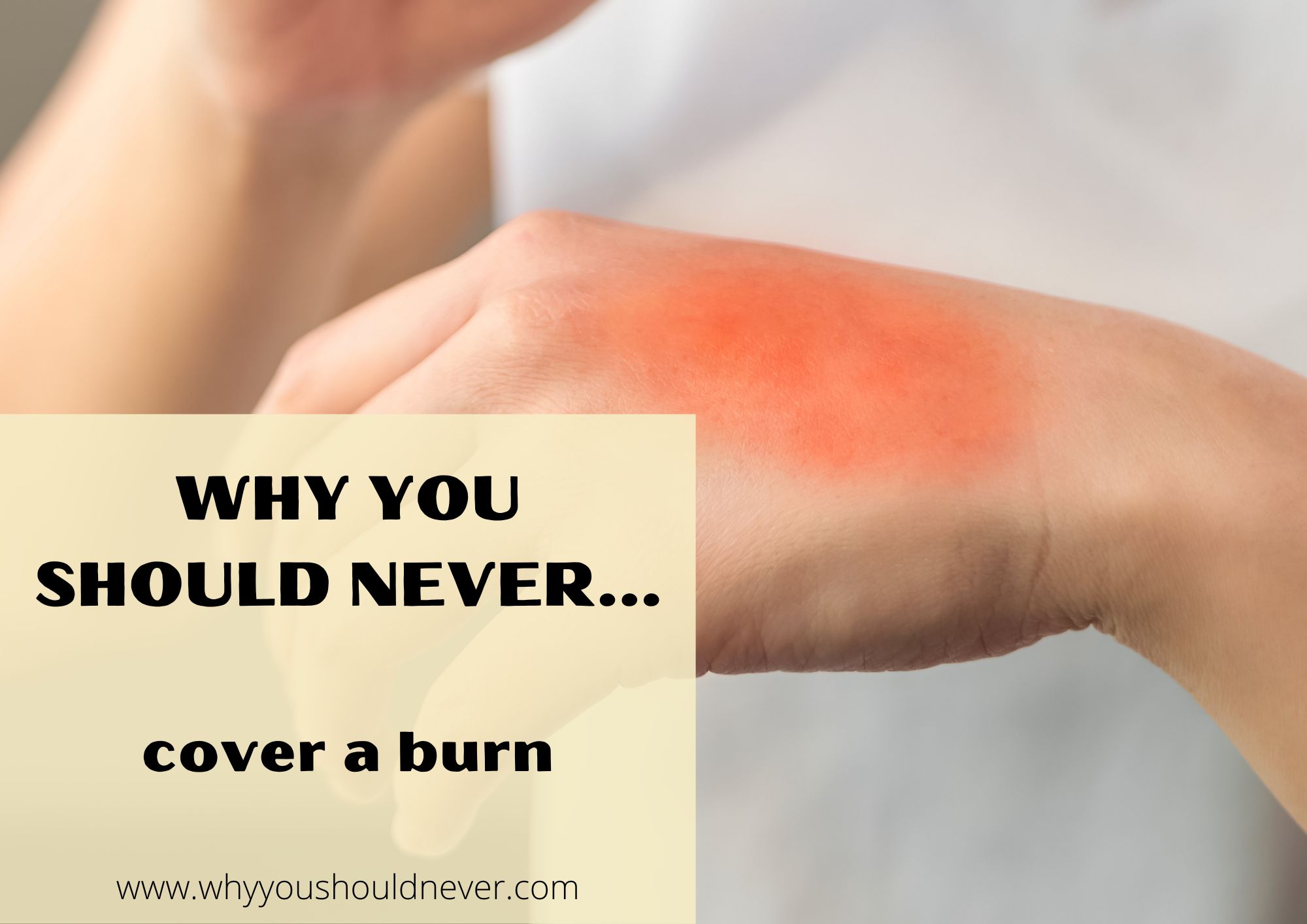![]()
Why You Should Never Cover A Burn
Picture this: You’re engaged in an intense battle of culinary prowess with a sizzling pan, or perhaps you’re wrestling with a hair curler that’s hotter than a summer in the Sahara. Suddenly, bam! You get a nasty burn.
Your instinct, honed by years of playground falls and paper cuts, screams for a quick fix – a band-aid, a strip of bandage, maybe even a dollop of toothpaste. Ah, that immediate relief!
Ah, not so fast! In the wild and complex world of burn first-aid, these seemingly innocent quick fixes might not be your knight in shining armor, and I’m here to tell you why.
5 reasons why you shouldn’t cover a burn
1. Let’s talk about heat retention
After a burn, your skin is hotter than the latest summer blockbuster. Slapping something onto the burn might seem like a brilliant idea, but it’s like putting a lid on a boiling pot.
Most materials – yes, including your favorite minty toothpaste – are fantastic at holding onto heat. What this means is that while you think you’re cooling down the area, you’re actually prolonging the skin’s exposure to high temperatures, potentially leading to more damage.
2. Introducing germs to a burn is no party
Your skin acts like your body’s bouncer, keeping the bad stuff (read: bacteria) out. A burn, though, is like a VIP pass for germs, providing a fast track into your system.
If you cover the burn, especially with something that isn’t sterile, it’s like inviting a whole horde of microscopic party crashers. This can lead to infections, which complicates the healing process and can be pretty dangerous.
3. Stuff sticking to your skin is not fun
Ever had a band-aid stuck to a hair? Ouch, right? Now, imagine that sensation but with your raw, sensitive, burned skin.
Some substances, particularly those not designed for burn treatment, can stick to the damaged area as it dries. Later, when you remove the covering, you’re causing further trauma to the skin. Just thinking about it gives me the heebie-jeebies.
4. It interferes with proper assessment
Covering a burn makes it harder for healthcare professionals to evaluate the severity of the burn when you seek medical attention. They need a clear view to determine the depth and extent of the burn, so smearing the burn with various substances can lead to delays in treatment.
5. Some coverings can cause chemical reactions
Back to the toothpaste, or any other substance you decide to reach for… These are not designed to go on burns. They can react with the damaged skin in unpredictable ways, potentially leading to chemical burns on top of your original burn.
Now you know that covering your burn with any old thing isn’t a great idea (it’s a terrible one, if I’m being honest). But what should you do instead?
How to treat a burn
- Cool it down – Run cool (not cold) water over the burn for around 10 to 20 minutes. This can help to reduce pain and cool the area, lessening the severity of the burn.
- Use burn-specific ointment – If you have a specialized burn cream or gel, apply it as directed. These can help to relieve pain and prevent infection.
- Avoid popping any blisters – Blisters are your body’s way of protecting itself. Popping them can increase the risk of infection.
- Take over-the-counter pain relievers – Non-prescription pain relievers such as ibuprofen or acetaminophen can help to manage the discomfort.
- Seek medical attention – If the burn is severe (third-degree burns or burns covering a large area), get to a healthcare professional as soon as possible.
It’s crucial to treat burns appropriately to promote healing, prevent infection, and avoid potential complications.
